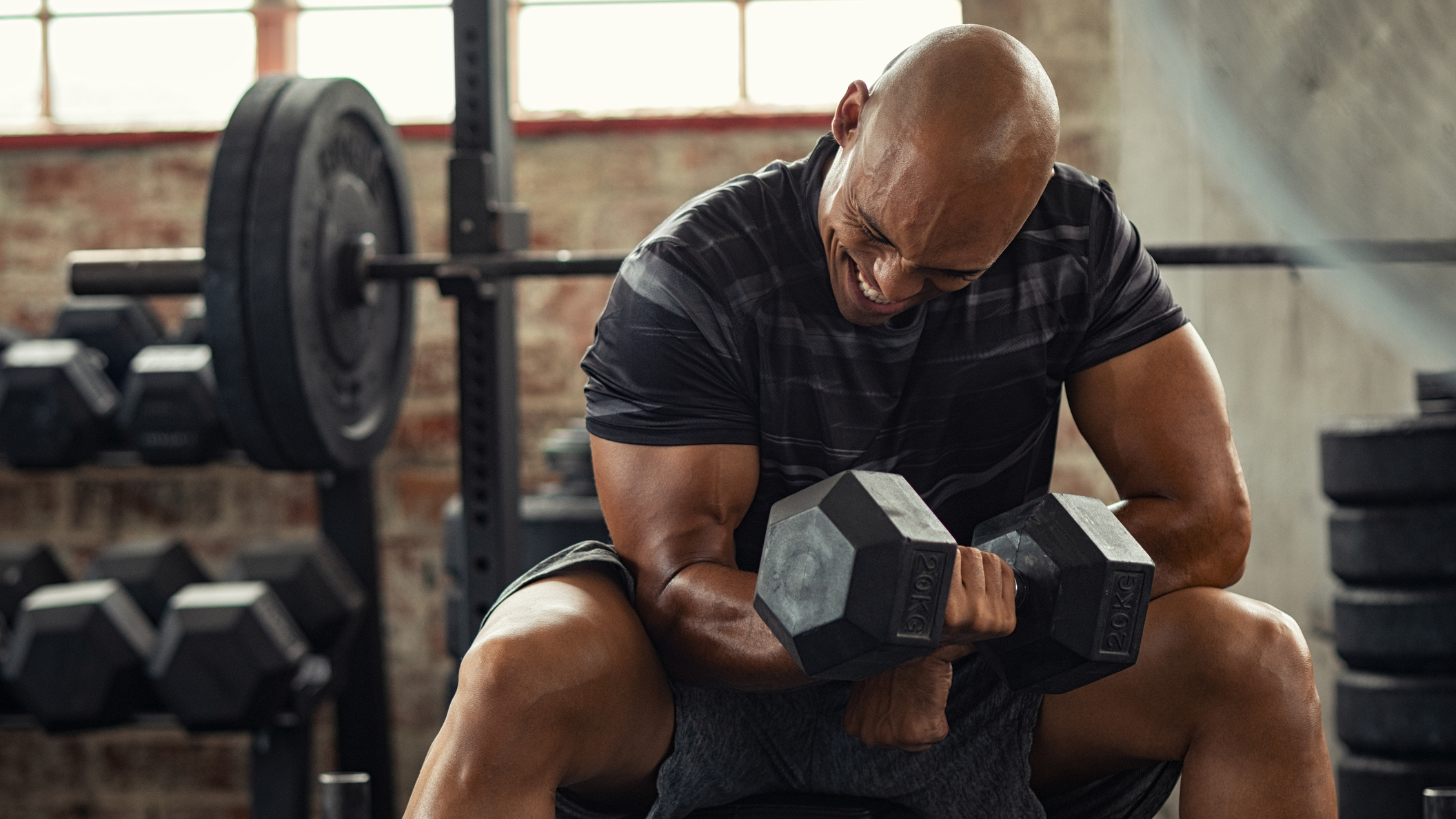
If something sounds too good to be true, it often is, but there’s usually an exception to the rule. In the strength training world, that exception is myo-reps.
According to myo-reps creator, strength coach Borge Fagerli, this technique delivers the same muscle growth and strength gains as straight sets do, but in much less time.
He has the backing of bodybuilding royalty Arnold Schwarzenegger in his Pump Club newsletter which has repeatedly touted it as a top trick for serious lifters.
But what are myo-reps, and how can you use them to upgrade your workouts? I spoke to Fagerli to find out.
What Are Myo-Reps?
Myo-reps kick off with one larger activation set of an exercise, followed by a series of smaller sets with fewer reps at the same weight, divided by short rest periods.
“The best way to explain myo-reps training is that it’s a way to extend a set,” says Fagerli.
“We all know that the last part of the set is the most effective for stimulating muscle growth, so you’re just repeating the most effective part of the set.
“It’s a matter of doing a hard set, taking a short rest, then doing a few more reps, and repeating this process.”
How To Use Myo-Reps In Your Workouts
If you’ve done a drop set, superset or rest-pause set before as part of your muscle-building efforts, the myo-rep formula will feel familiar, but there are nuances you need to be aware of to get it right.
“The rule is to do eight to 15 reps for the first set. That’s called the activation set. You can go as high as 20, but I think eight to 15 is a good range.”
You should work up to a point where you feel like you have one or two reps in reserve (RIR). At this point, put down the weight, take three to five deep breaths, and then pick up the weight again for a set of three to five reps. Repeat this process until you hit failure.
“Whatever number you pick—three, four or five reps—you stay with that until you can’t continue,” says Fagerli.
“For example, if you pick five reps and you do sets of five, five, then you try to do five move but you can only manage four—stop there.
“If you pick three [reps] then you might be able to do more sets, but the total volume will still be autoregulated [by your work capacity]. In practice, it always works out perfectly.”
Whether you should do three, four or five reps for your myo-rep set will depend on the type of athlete you are, and also require a degree of trial and error.
“A myo-rep set for me might be a set of 10; short rest; a set of five; short rest; a set of three; and stop. Whereas for somebody whose individual physiology is tailored more to muscular endurance, their set might look like 10, five, five, five, five, five, four.
“That’s a more appropriate stimulus for their physiology, but the other version is better suited to me because I’m more fast-twitch muscle fiber dominant—I have a lower work capacity.
“If I tried to do the second one, that would mean my recovery would not be optimal, but the other athlete could probably recover from it. It’s sort of like a biofeedback way of applying the training method.”
The weight you use will also be regulated by your physiology and performance, Fagerli adds.
“I would use something between 40-80% of your one-rep max. I generally say that as long as you hit between eight and 15 reps during the activation set—that’s good.”
Who Should Use Myo-Reps?
“I’ve used it with beginners and advanced bodybuilders—all across the board. It’s a very effective technique,” says Fagerli, but he also points to two types of gym-goers who will reap more benefits than most.
“One type holds back too much—they’re keeping too many RIR. They think they have one RIR when they actually have five,” says Fagerli. “This technique intrinsically forces you to train closer to failure because it accumulates fatigue.
“On the other hand, we have those who tend to do too much volume and train too hard all the time. If they do myo-reps properly, then they will also start gaining because they’re lowering their volume and managing their fatigue better.”
Which Exercises Should You Use Myo-Reps For?
Myo-reps are a versatile tool. If your training frequency is low (two or three days per week) you can use them for all exercises in a full-body workout, or you can use them for isolation exercises within your wider workouts as “an excellent way to further boost your gains”, says Fagerli.
However, while he says high-level powerlifters and weightlifters have applied this technique to large compound exercises such as the barbell squat, bench press and deadlift, this isn’t how he would recommend using it.
“Since there is a cardiovascular component to [compound exercises], I prefer to use myo-reps on more stable exercises on machines, or isolation single-arm and single-leg moves.
“Before you exhaust the muscle, you’re going to exhaust the cardiovascular capacity so you’re probably going to get some technique breakdown.”







